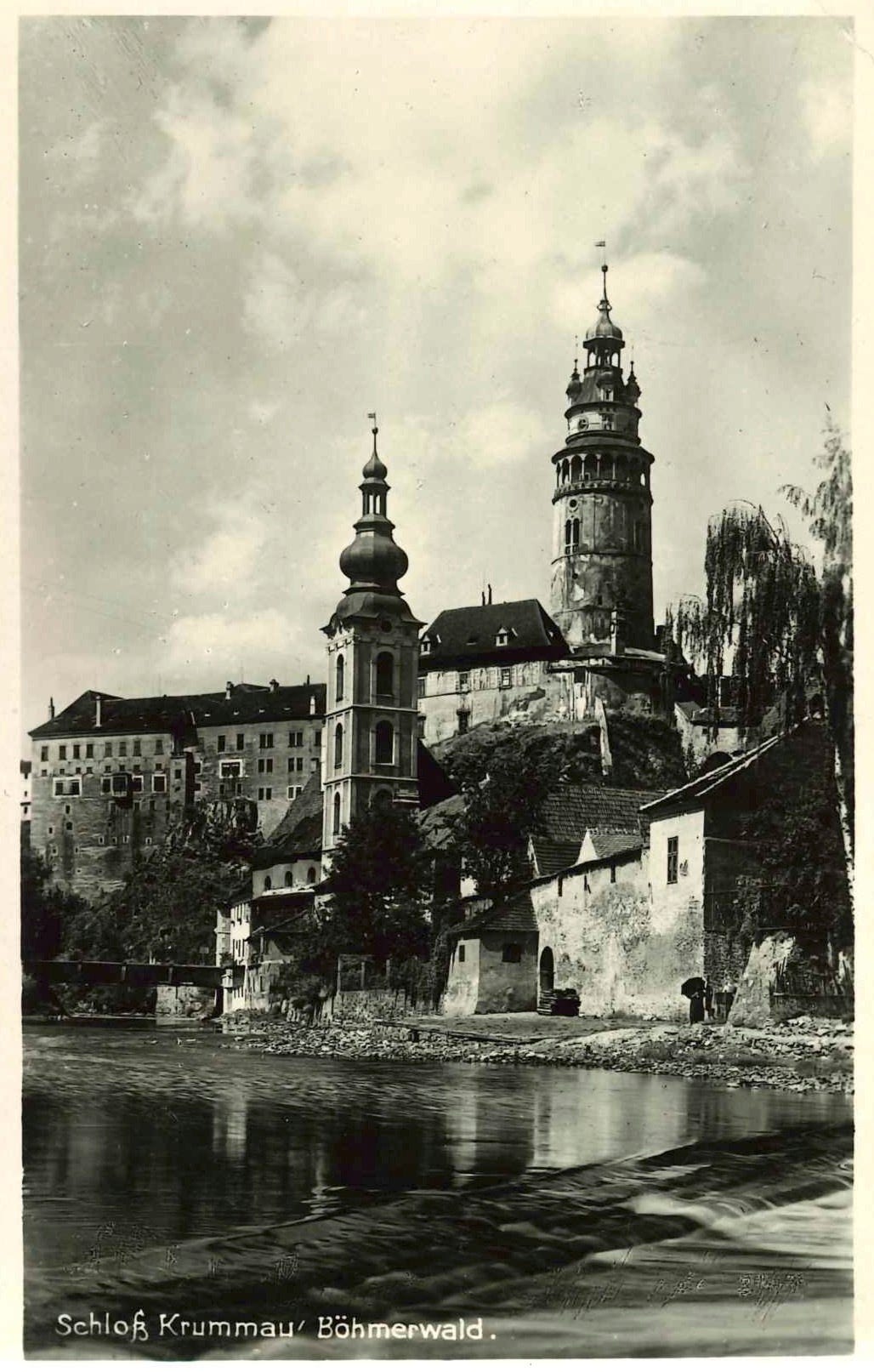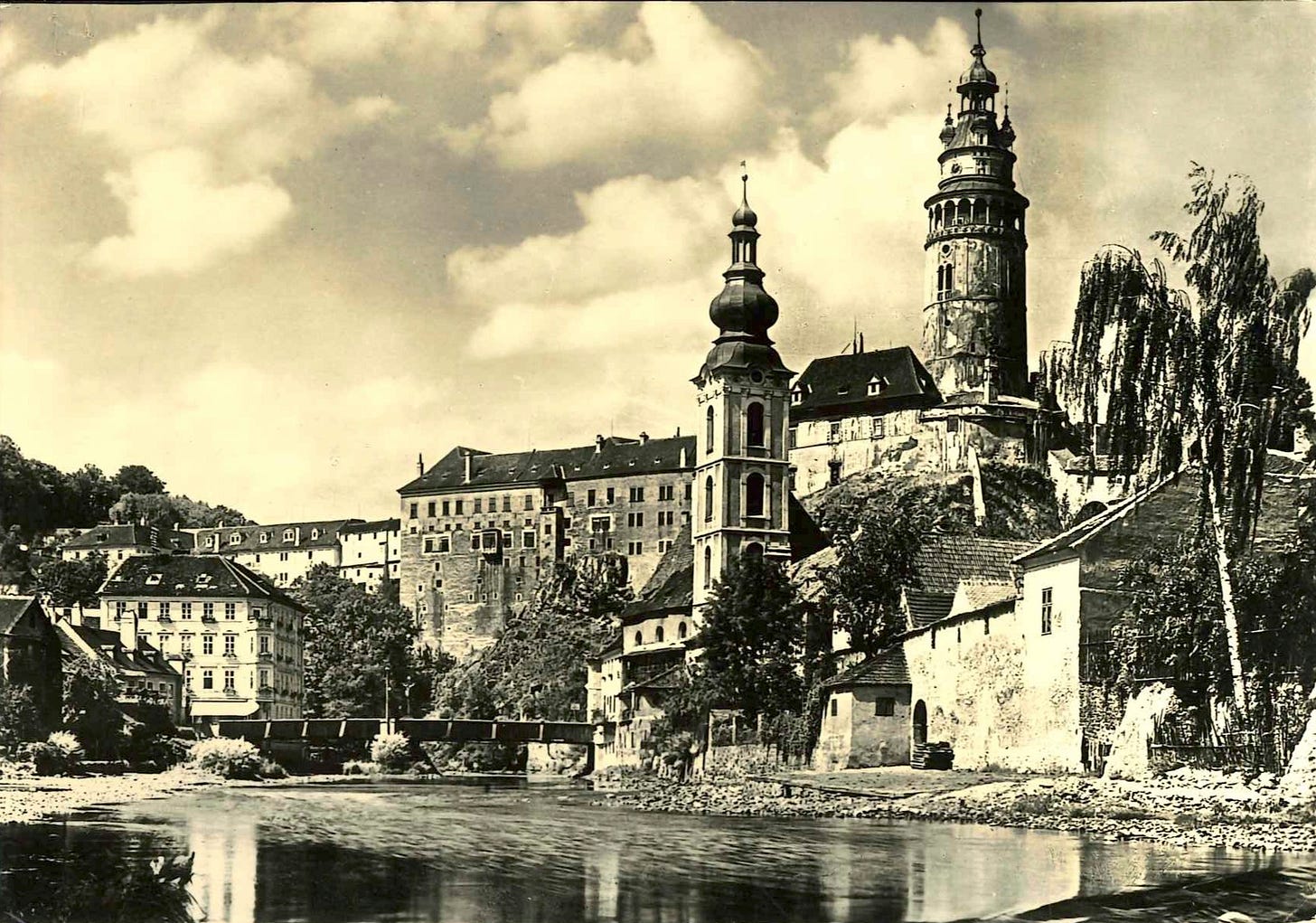What Got Me 'Hooked' on Postcards?
Some initial thoughts as well as, of course, old picture postcards
Last autumn, I transferred my late grandfather’s picture postcard collection to my workplace here in Norway.
I keep mentioning my grandfather, whom I shall introduce at some later point here, too. For now, it suffices to say that he was born in Vienna in 1922, experienced the Great Depression as a teenager, was conscripted into the Wehrmacht in December 1941 and spent most of the next four years on the Eastern Front. After WW2, he worked many odd jobs, spent about a decade working as a teacher in Catholic private schools (History and Religion), and, in the early 1960s, he joined the Austrian Bundesheer. He served in that outfit as an officer and eventually retired a colonel in the early 1980s. He died in 1988 when I was six years old. I am certain I was at his funeral, but there isn’t anything that I consciously remember.
There will be time to talk about him in more detail, for now it suffices to note that his life covers a good deal of what the Marxisante historian Eric Hobsbawm called The Age of Extremes: an era of enormous killings, unprecedented material and technological change, and a period that will, in all likelihood, remain quite unique in the human experience.
What’s in These Boxes?
After WW2 my grandfather began collecting postcards (for those too young to know: here you go, it’s a fair article). When he died, he had amassed some 40,000 cards, mostly from Cold War Austria and a select number of neighbouring countries, which reflect both the era’s ideological divide as well as Austria’s long-standing ties to certain neighbouring areas.
There are many postcards from Austria’s neighbours, especially from Czechoslovakia (today: Czechia and Slovakia), Hungary, former Yugoslavia, Italy, both Cold War Germanies (although more from West Germany), and Switzerland. There are also sizeable amounts of picture postcards from other ‘Western’ countries, including France, the Netherlands, Belgium, the United Kingdom, the Nordics—Denmark, Sweden, and Norway, as well as Finland—as well as from Spain and Italy.
Still, although fewer in number, there are also cards from virtually all over the world: North and South America, Africa, Asia, and Oceania; I even found one from São Tomé and Príncipe.
What Got me ‘Hooked’ in the First Place?
Last autumn, I was finishing the revisions of my upcoming research monograph, which is scheduled to be published later this year with McGill-Queen’s University Press. My book focuses on the Habsburg monarchy, in particular its fiscal-financial-military regime around 1700 in what today is southern Czechia.
With the boxes full of picture postcards in my office, I began looking for old postcards of that particular place, Český Krumlov, then known as Böhmisch Krumau, and after a few minutes, I found a few of them. Back then, I was thinking about the cover design of my book, and I’m happy to announce that one of these images actually made it onto the cover of my book (I’ll show you which one below).
Their aesthetic and other values aside, I do think these few images are also quite illustrative of the collection as a whole, and there’s merely a few more lines before I post some of them.
Therefore, a brief appeal to you, dear readers: if you would like me to check if I have cards of this place or of that period, please let me know in the comments or reach out by email (which you may find on my faculty profile).
If you simply would like to see ‘more’ because they look nice, please let me know and I shall see to it.
Český Krumlov/Krumau Across the 20th Century
Information about the place here (Wikipedia); it’s a UNESCO World Heritage site, which also offers a wonderful collection of more recent photographs.
I warmly recommend the archive (contact me if you’d like put you in touch with them) and winter visits—it’s cold but not as crowded (overflowing) as it is in summer.
If you wish learn about Bohemian/Czech history, I recommend Derek Seyer’s The Coasts of Bohemia (1998; see his website) and the current up-to-date textbook, A History of the Czech Lands, ed. by Jaroslav Pánek et al (2nd ed. 2019).
Before the Great War (postcards from 1911-12)


During and After the Great War (images from 1917-38)
The main difference is technological and relates to the production of the below cards: the former (see above) are what’s called lithograph prints (the image’s negative is carved into a rock and used to mass-produce the image, which are subsequently coloured, hence the limited number of different colours).
The below pictures are “true photographs” (orig. Echte Photographie), as the backside proudly informs the reader (buyer).


The Cold War Era (images from the 1950s-early 80s)


I do have more postcards of Český Krumlov/Krumau, and I shall discuss them in a separate posting as these other images show quite different places and points of view. As such, I do think they fit better in a separate post.





I’m looking forward to seeing what you find